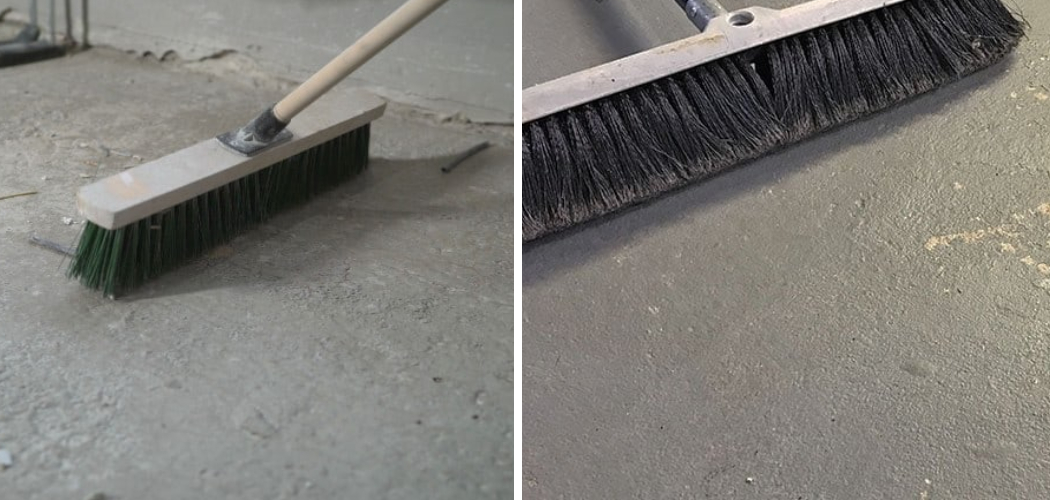Nobody wants a flooded basement, but it can be especially problematic if there is no floor drain to catch water from spills or overflows. The presence of a floor drain would make cleaning up the mess easier and faster, but unfortunately this isn’t always an option due to the location or financial means of homeowners. However, with some diligent effort, you may still be able to clean your basement without an in-floor drain.
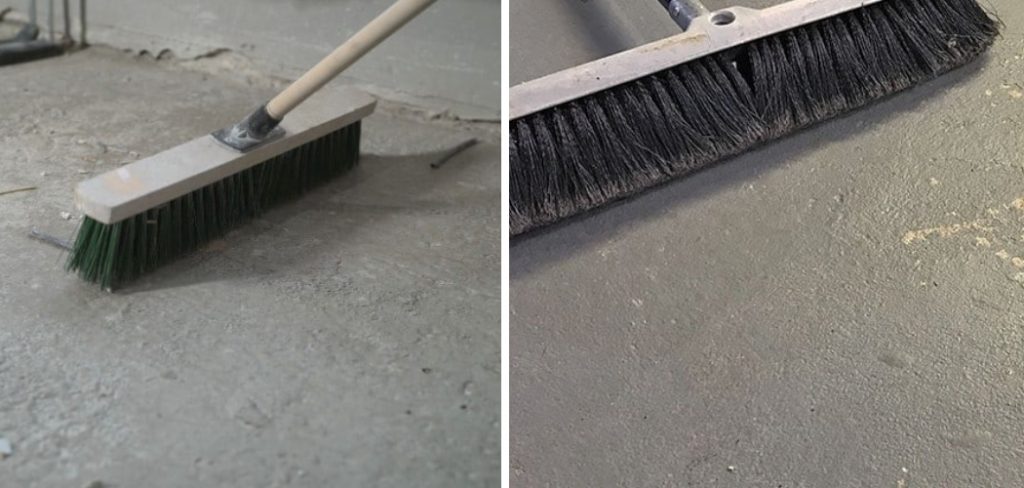
In this post, we will discuss tips on how to clean basement floor with no drain—including materials needed, easy steps for success (including both old-fashioned methods used by our grandparents as well as modern techniques), plus alternative solutions such as using rugs to help wick away moisture. So let’s get started!
Needed Tools and Materials
Given below is a list of tools and materials that you will need in order to clean your basement floor without an in-floor drain:
- Buckets or Other Catchment Containers for Water
- Mop Bucket With Wringer (for Traditional Mopping)
- Squeegee (for Squeezing Out Water From Mops Easily)
- Shop Vacuum Cleaner (for Sucking Up Water From the Floor)
- Towels or Rags for Soaking Up Spills
- Cleaning Solutions That Don’t Damage the Surface of Your Basement Floor
11 Step-by-step Guides on How to Clean Basement Floor With No Drain
Step 1: Clean Up
Start by picking up any debris that may be on the floor. This includes items such as toys, tools and furniture. It’s best to use a dustpan and broom for this task as it will save time and energy in the long run. But if you don’t have one, a wet mop can be used instead. It’s important to note that when using a mop, make sure it is wrung out first so you don’t spread dirt and debris around.
Step 2: Mop the Floor
Once all the debris has been removed, you can now begin mopping the floor. Fill up your mop bucket with warm water and add your chosen cleaning solution. Dip the mop into the bucket and wring it out so that it’s only damp, not wet.
Start at one corner of the room and move in a systematic pattern across to the opposite wall. Be sure to rinse out the mop often as you don’t want dirt and debris from one area being transferred to another.
Step 3: Squeegee the Floor
Once you’ve finished mopping, it’s time to use the squeegee. Attach it to your mop handle and start at one end of the room. Work systematically in a back-and-forth motion to draw out as much water as possible. Make sure that you don’t overlap your strokes as this will just spread the water around even more.
Step 4: Vacuum the Floor
Once you’ve finished squeegeeing, the next step is to vacuum the floor. This helps to draw out any remaining moisture and also removes dirt and debris that may have been missed during the mopping stage. If you don’t have a shop vacuum, an ordinary domestic vacuum cleaner can also be used.
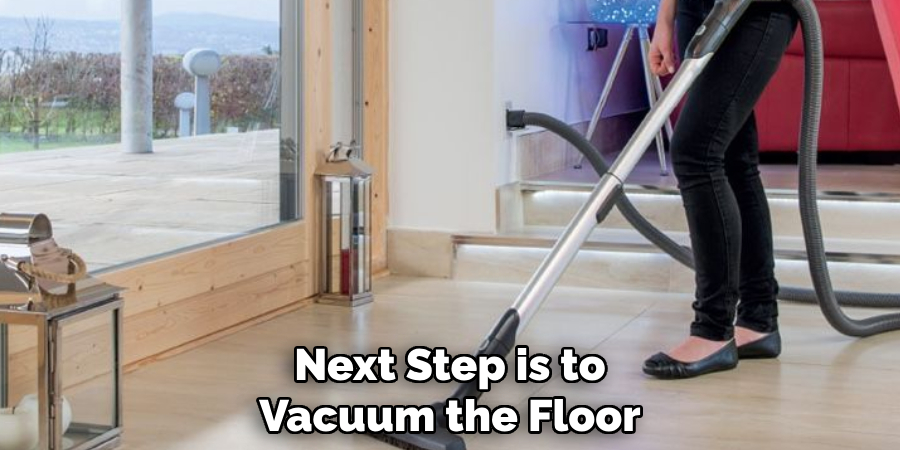
Step 5: Dry the Floor
Once you’ve finished vacuuming the floor, it’s important to dry it off completely. Lay down towels or rags and walk them across the entire floor. This will help to soak up any remaining moisture and help to prevent mold or mildew from growing. But don’t forget to wash the towels or rags afterward.
Step 6: Inspect the Floor
Once you’ve dried off the floor, take a few minutes to inspect it closely for any stains or areas that may have been missed. If there are any, use a damp cloth with some cleaning solution to remove them. It’s important to do this as soon as possible so that the stains don’t set in.
Step 7: Deodorize the Floor
If there is a musty smell lingering on your basement floor, you can deodorize it by using baking soda or white vinegar. Sprinkle some baking soda over the affected area and let it sit for a few minutes before vacuuming it up. Alternatively, you can use white vinegar diluted with water in a spray bottle and spray the area lightly.
Step 8: Place Rugs Around
Rugs are great for wicking away moisture from basements without floor drains as they help absorb any spills or leaks quickly. Place rugs around the perimeter of the room to help protect your floor from any future water damage. It’s also a good idea to have one rug that can be moved around the room and used as needed.
Step 9: Check For Leaks
Don’t forget to periodically check for any leaks or damp spots on the walls or ceiling of your basement. If you do find them, take appropriate action such as sealing the area with waterproofing sealant and checking for any plumbing issues. However, for more serious problems it’s best to contact a professional plumber.
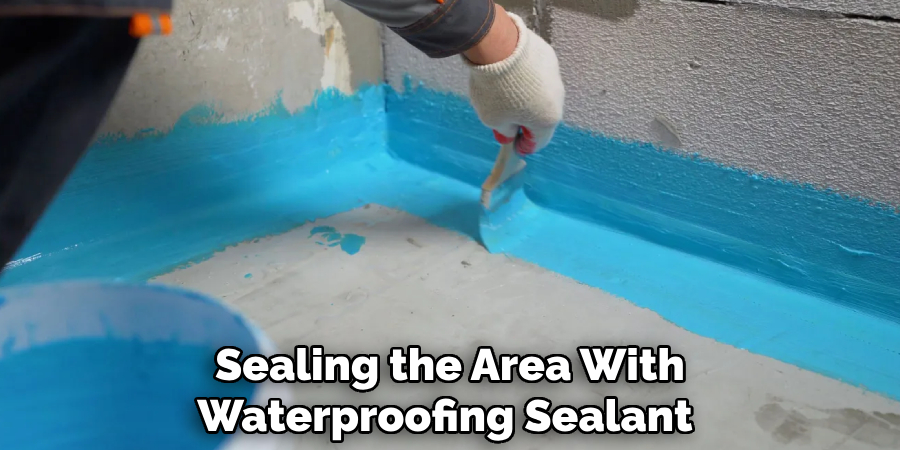
Step 10: Prevent Future Damage
To help prevent future water damage, it’s a good idea to invest in a dehumidifier. This helps reduce the humidity levels in your basement and can also help with mold prevention. It’s also a good idea to check the grading of your property to make sure that it is angled away from your house. If rainwater or snow runoff is pooling near your foundation, this can cause water seepage into your basement.
Step 11: Keep Floor Clean
Finally, keep your basement floor clean and dry by sweeping it regularly and mopping up any spills or leaks as soon as they occur. This will go a long way in preventing water damage and ensuring the longevity of your basement floor without an in-floor drain.
Following these steps can help you keep your basement floor clean without the need for an in-floor drain. While it may take a bit more effort and time, with regular cleaning and maintenance you can keep your basement dry and free of moisture damage.
Additionally, if you have any questions or concerns about how to clean the basement floor with no drain, feel free to contact a professional plumber or masonry specialist for assistance.
Do You Need to Hire a Professional?
In most cases, you can clean your basement floor without an in-floor drain on your own by following the steps outlined above. However, there are some cases where it may be beneficial to hire a professional such as if you have severe water damage or need help repairing plumbing issues.
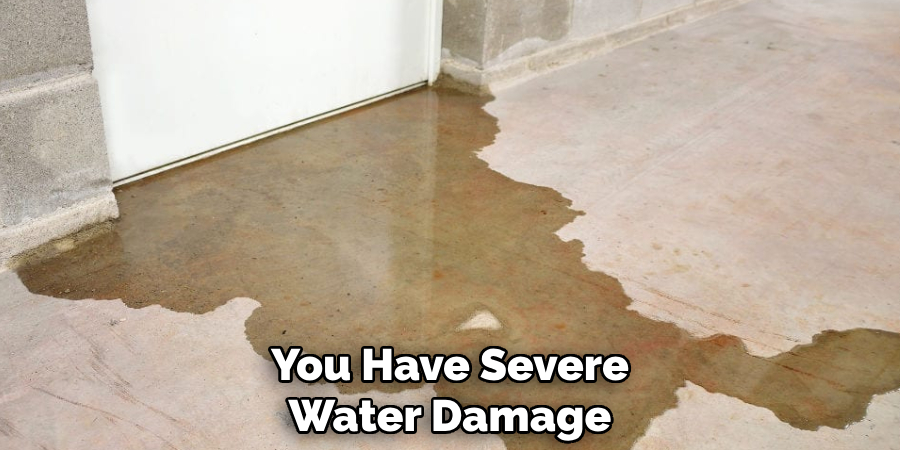
If you decide to hire a professional for assistance, make sure to do your research and hire someone who is experienced in basement floor cleaning. This way, you can be sure that the job will be done right the first time and that any necessary repairs or improvements will also be completed to the highest standards possible.
Frequently Asked Questions
Q1: How Often Should I Clean My Basement Floor Without a Drain?
A1: It’s best to clean your basement floor on a regular basis. This will help prevent water damage and keep the area free of dirt, debris and mold. Depending on how the floor is used, you should aim to clean it at least once every two to three months.
Q2: What Are Some Good Cleaning Solutions for Basement Floors?
A2: There are many different types of cleaning solutions available but mild detergents such as dish soap or laundry detergent work best. Avoid using harsh chemicals as they can be damaging to the floor or your skin. Additionally, you may also want to consider investing in a natural floor cleaner or vinegar-based solution for an environmentally friendly cleaning option.
Q3: Should I Wax My Basement Floor?
A3: Waxing can help protect the floor from scratches and wear and tear but it’s not necessary if you are regularly cleaning and maintaining your basement floor. However, if you do decide to wax the floor it’s important to use a non-slip product as this will help prevent falls.
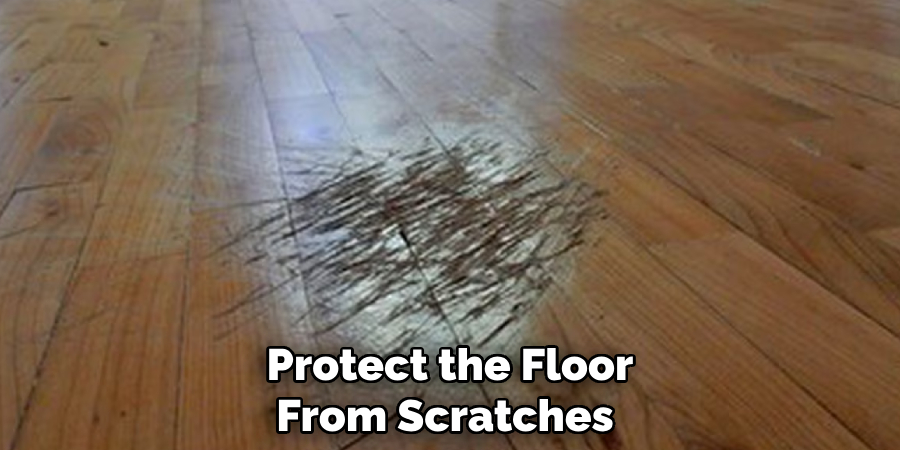
Q4: Are There Any Special Precautions I Should Take When Cleaning a Basement Floor With No Drain?
A4: Yes, it’s important to make sure that you don’t leave standing water on the floor as this can lead to water damage. Additionally, make sure to inspect the floor for any signs of mold or mildew as these can be difficult to remove once established. Lastly, always wear protective gloves and clothing when cleaning a basement with no drain as this will help protect your skin from any harsh chemicals that may be used.
Conclusion
Nobody wants a flooded basement, but it can be especially problematic if there is no floor drain to catch water from spills or overflows. The presence of a floor drain would make cleaning up the mess easier and faster, but unfortunately this isn’t always an option due to the location or financial means of homeowners. However, with some diligent effort, you may still be able to clean your basement without an in-floor drain.
In this post, we will discuss tips on how to clean basement floor with no drain—including materials needed, easy steps for success (including both old-fashioned methods used by our grandparents as well as modern techniques), plus alternative solutions such as using rugs to help wick away moisture. So let’s get started!
